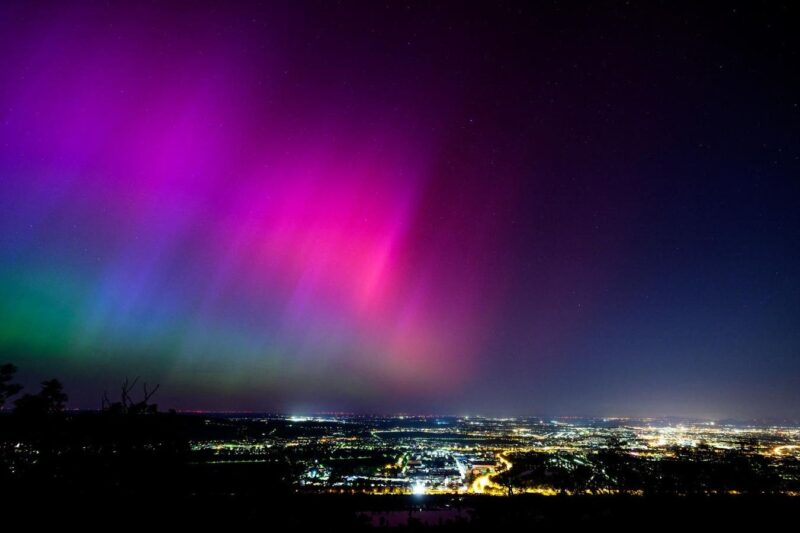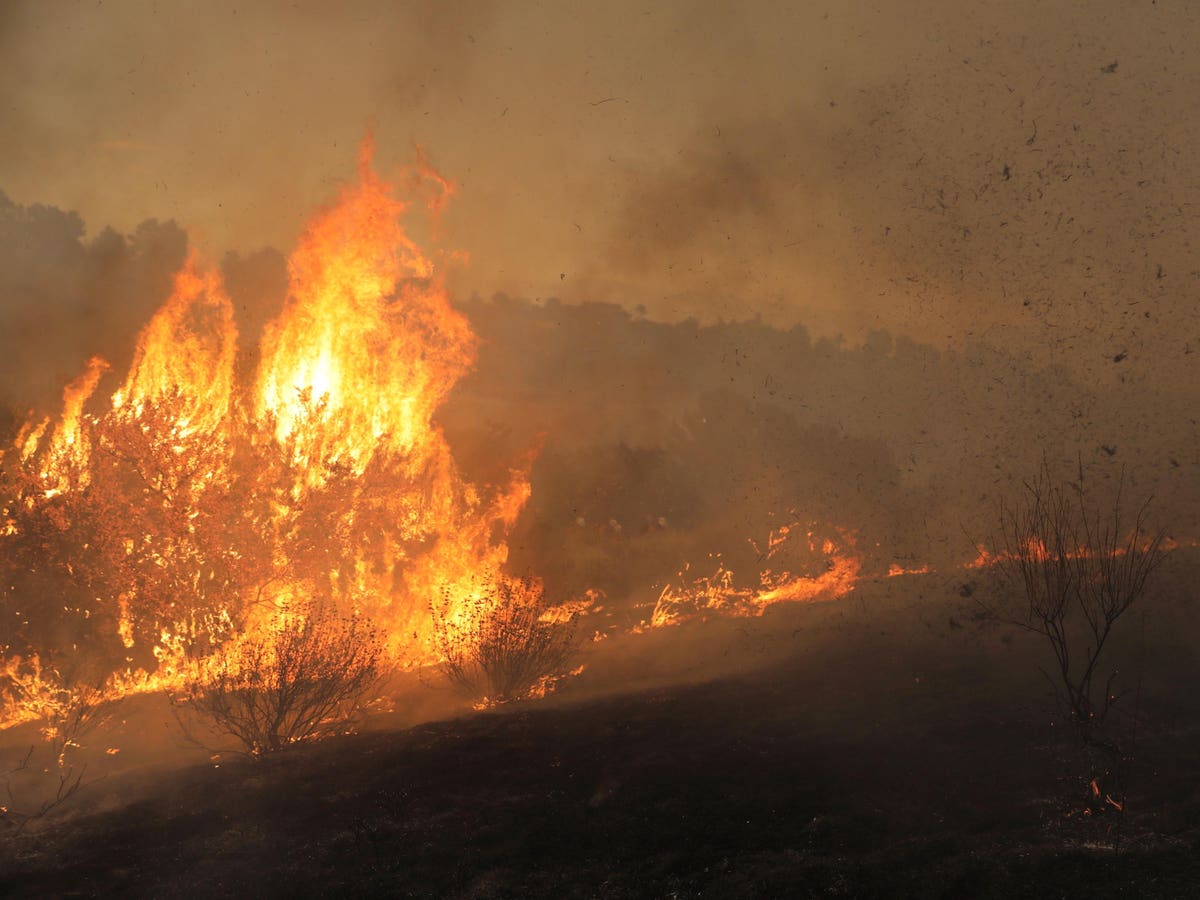Northern lights (aurora borealis) illuminate the night sky over Vienna during a geomagnetic storm on May 11, 2024. (Photo by MAX SLOVENCIK/APA/AFP via Getty Images)
APA/AFP via Getty Images
Each Monday, I pick out North America’s celestial highlights for the week ahead (which also apply to mid-northern latitudes in the Northern Hemisphere). Check my main feed for more in-depth articles on stargazing, astronomy, eclipses and more..
The Night Sky This Week: Oct. 13-19, 2025
This week the stars bring us the start of two fireball-rich meteor showers, a striking view of the moon and Jupiter, and some fine morning conjunctions featuring Regulus and Venus. As the moon retreats to its last quarter phase, evening skies get darker, making aurora easier to see. That’s crucial because the weeks after the equinox on Sept. 22 often see a spike in geomagnetic disturbances — the “equinox effect” — as the orientation of Earth’s magnetic poles relative to the solar wind allows solar wind particles to slip through “cracks” in Earth’s magnetosphere and spark displays of the Northern Lights. With the sun still in its “solar maximum” phase, it pays to be on alert in North America.
Here’s everything you need to know about the night sky, stargazing and astronomy this week:
Monday, Oct. 13: Southern And Northern Taurid Meteor Showers
The Southern Taurids and Northern Taurids both begin today, two meteor showers caused by dust and debris from comet 2P/Encke. Although their hourly rates are modest (about five meteors per hour), these showers are famous for their bright fireballs — exceptionally bright “shooting stars.” Both showers will peak in early November, but while you’re stargazing over the coming weeks, keep watch for slow, dramatic meteors streaking from the east.
Tuesday, Oct. 14: Last Quarter Moon And Jupiter
Stellarium
Tuesday, Oct. 14: Last Quarter Moon And Jupiter
In the pre-dawn hours, look east to see a last quarter moon — half-lit from our perspective — alongside Jupiter. The giant planet is currently in the constellation Gemini, close to “the twins,” the stars Castor and Pollux.
Thursday, Oct. 16: Crescent Moon And Regulus
Stellarium
Thursday, Oct. 16: Crescent Moon And Regulus
An hour before sunrise, in the east, a delicate 23%-lit waning crescent moon will shine just a degree from Regulus, the brightest star in the constellation Leo. Look below the pair for bright Venus.
Sunday, Oct. 19: Crescent Moon And Venus
Stellarium
Sunday, Oct. 19: Crescent Moon And Venus
Look east, again, before sunrise, to see a delicate 4%-lit waning crescent moon just above bright Venus. They’ll be separated by about four degrees. Use binoculars to best see Earthshine glowing faintly on the moon’s dark side.
The times and dates given apply to mid-northern latitudes. For the most accurate location-specific information, consult online planetariums like Stellarium.
Wishing you clear skies and wide eyes









